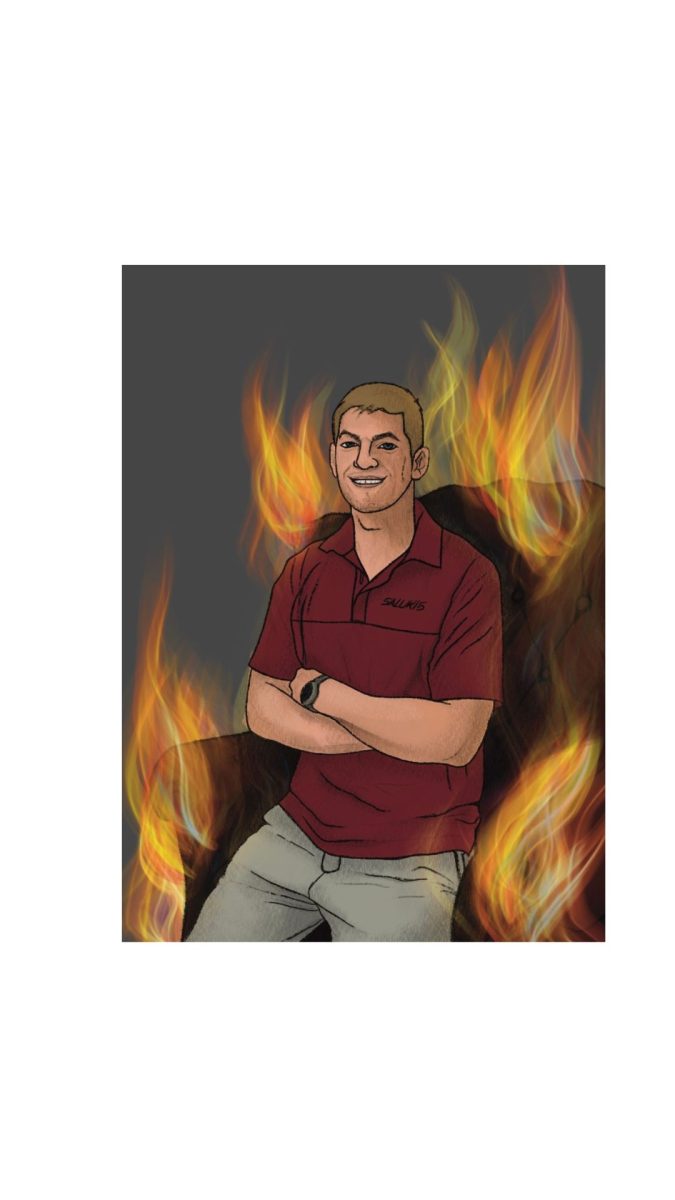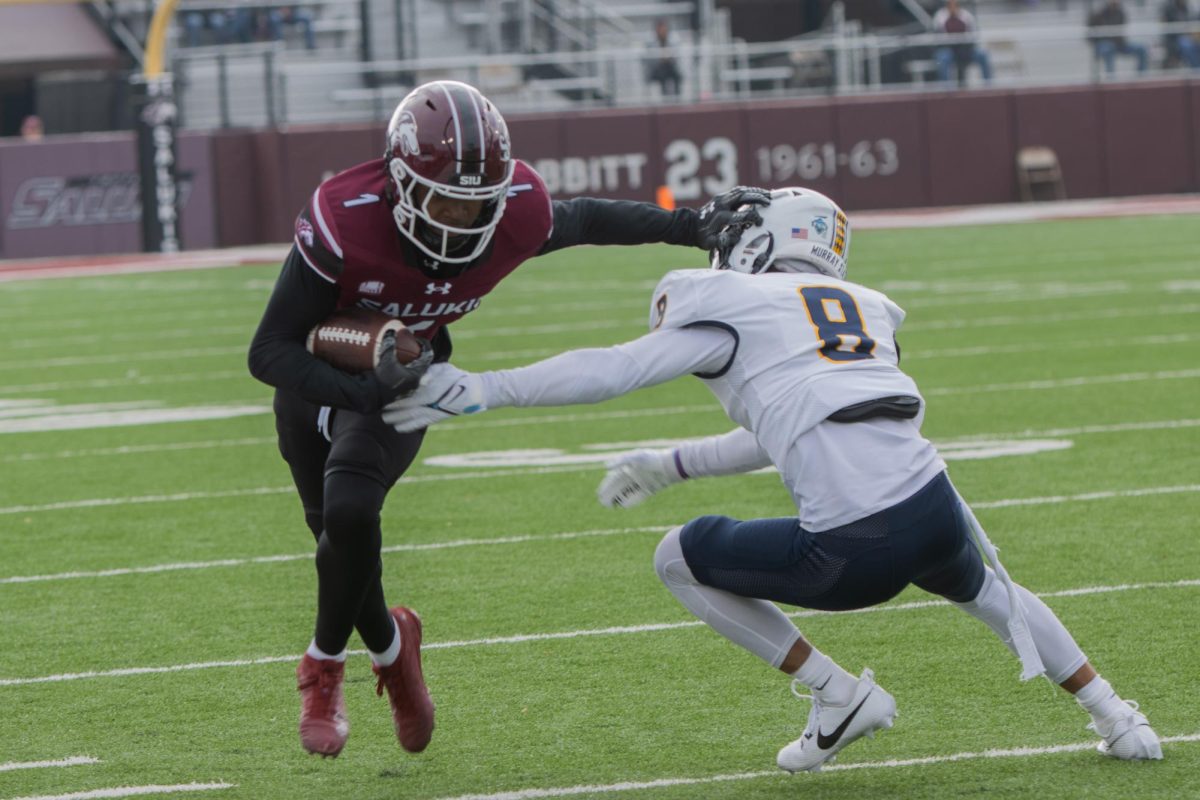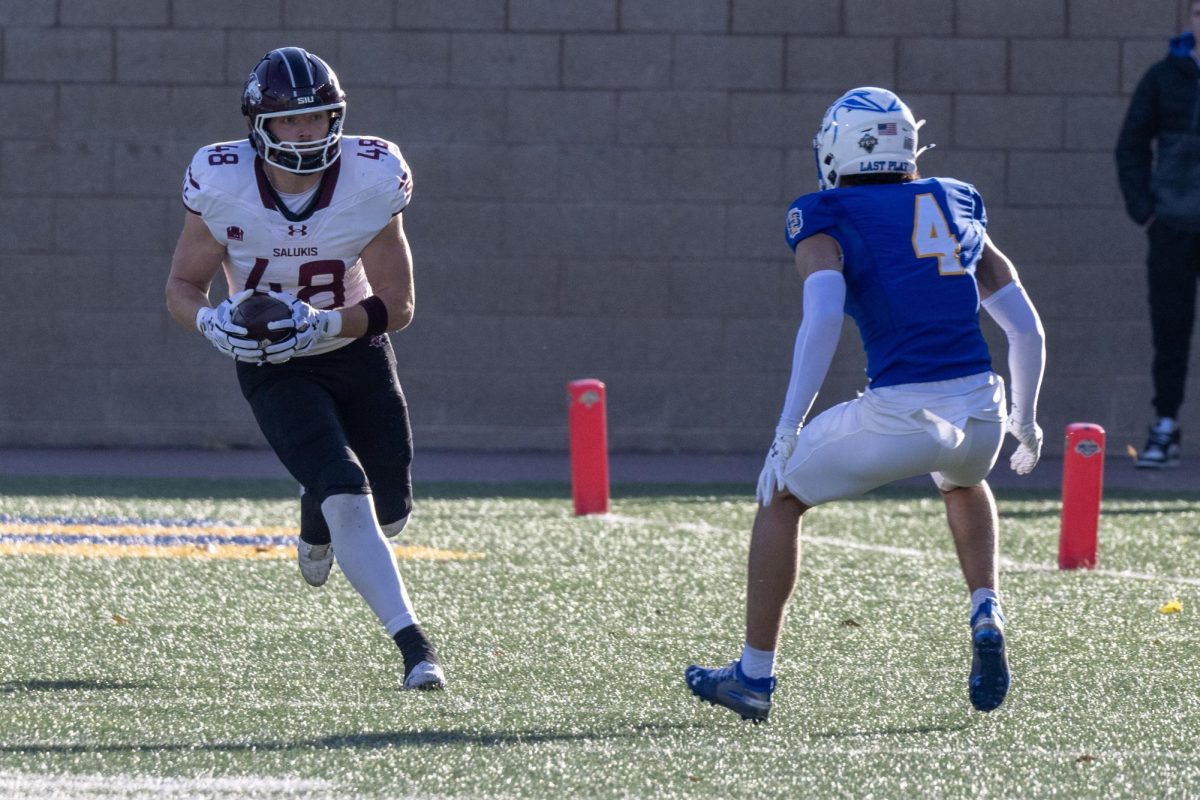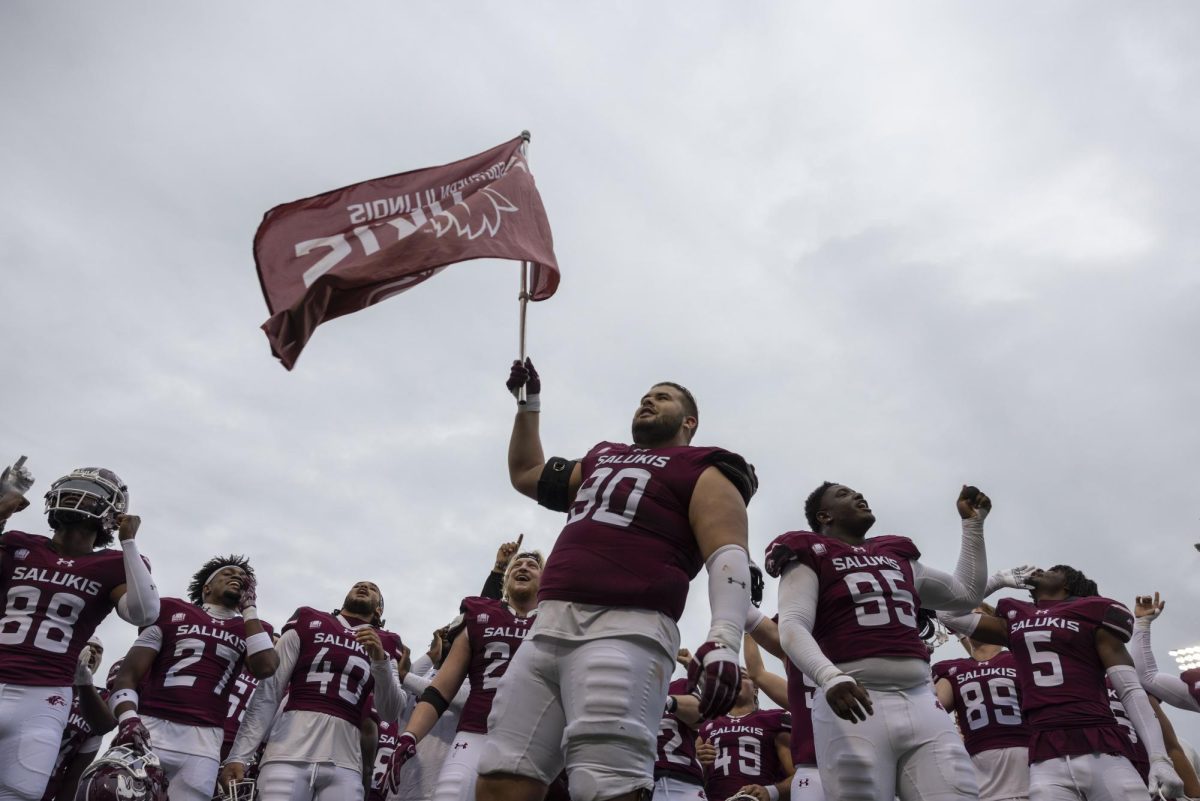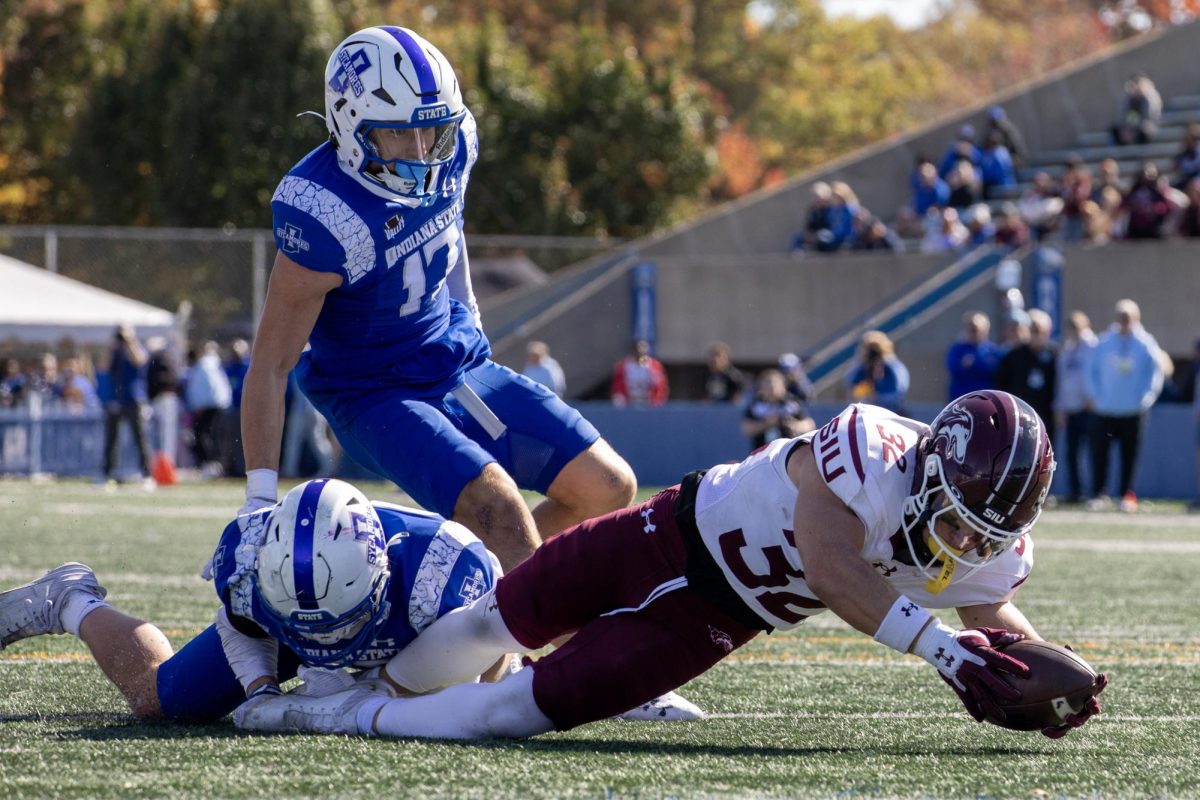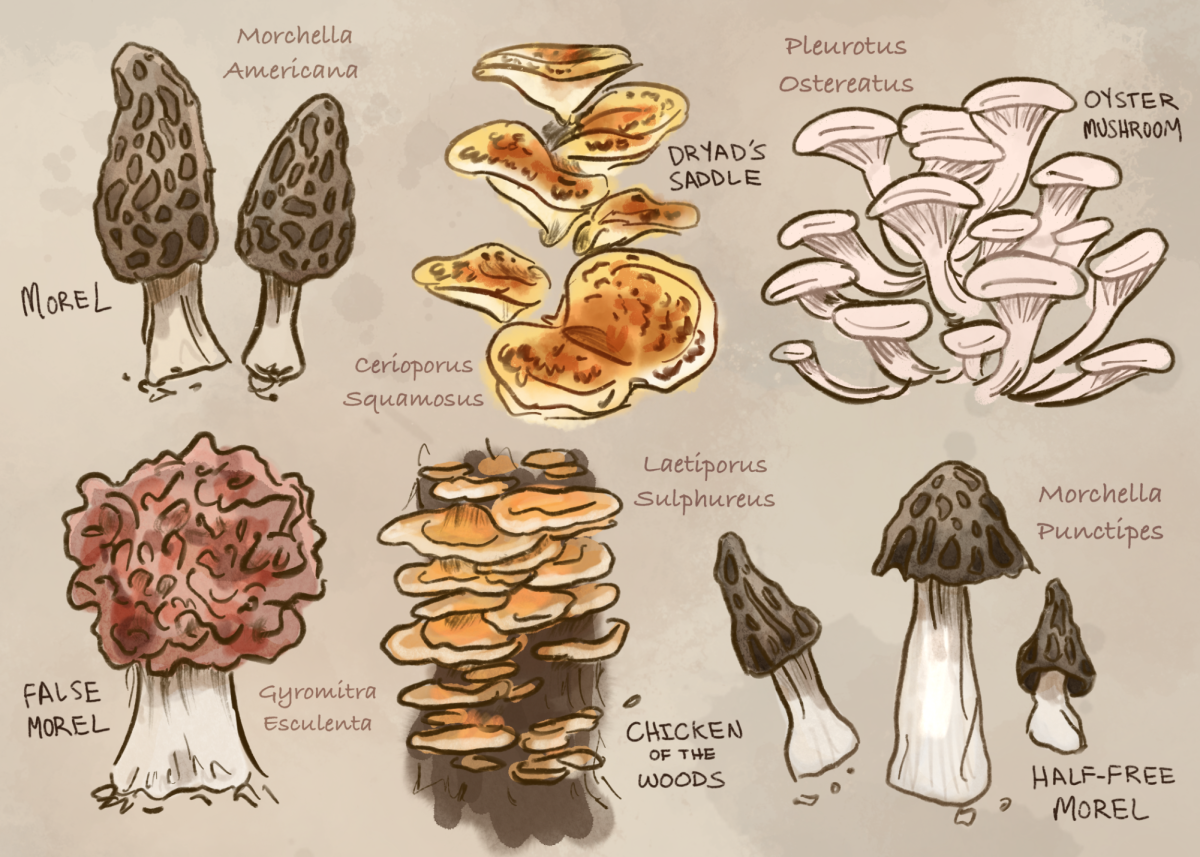If you were standing at the line of scrimmage on the sideline at a football game, you would have the best view in the house of the sport’s beauty. Your eyes might lock onto the supreme display of power and finesse emitting from the battle of a defensive tackle versus an offensive lineman. You could also be drawn to the initial release of a wide receiver attempting to separate from a cornerback and catch a pass downfield.
Although football could be perceived as a simple sport, it is far more complex than meets the eye. Two teams send out 11 men on offense and defense dialing up plays to either score or stop the opposition from scoring. The players on each side work as a unit, but they each have their own assignments, and one man not doing his job on a play can be the difference in the game.
The making or breaking of a play starts up front in the trenches, otherwise known as the line of scrimmage. Here, the heftiest and strongest players are in a continuous tug of war where the defensive players on the line are after the quarterback who is protected by the O-line.
Advertisement
There are five offensive lineman, but the most vital are the tackles who bookend the O-line and deal with the best combination of speed and strength that the defense has to offer.
“I’m the left tackle, I’m Nic’s [SIU quarterback Nic Baker’s] blindside, I gotta be always on point because, if not, he’s going to get killed,” Jake Green said.
Although Green and tackles like him are connected with the line, they can easily be taken away from the pack based on how the edge rusher tries to get by him. Defensive end Dewey Greene said there are many things he can throw at an offensive lineman in order to get around him. The film he watches throughout the week helps better prepare him for his matchup on gameday.
“When we watch film, I like to see if an offensive lineman can turn their feet, can turn their hips. If they can’t, just get them upfield and get them going and come in underneath,” Greene said.
It is up to the discernment of the defender whether he wants to try to overpower his assignment by pushing him backwards via a bull rush; swipe his hands in order to swim move past him; or even take the long way around him using his speed.
This causes an offensive lineman to react quickly to his attack in terms of chopping a defender’s hands away, chopping his hands into his chest, or grabbing him while he’s in front of him. Each time the whistle is blown to signal a play’s end, both players are taking information away from their encounter.
“Seeing after each rep what he’s giving me, and if it’s consistent, then knowing what rush plan to do after that,” Greene said.
Advertisement*
Every play sets up the next, and Green shares the sentiment of his counterpart on the line.
“Each play, I’m getting a little bit of a tell on how he likes to pass rush… I’ll be able to tell better throughout as the game goes,” Green said.
With each defensive or offensive lineman bringing something different to the table every week, players must be prepared in order to combat the other side’s gameplan. But regardless of their matchup’s performance or style of play, there is no room for either position to adjust.
“My technique stays the same, always, can’t change that up. You start changing techniques, you start making mistakes,” Green said.
A mistake by an offensive lineman can mean a rough day for the quarterback, as he doesn’t have time to get the ball out of his hands. But if he does have time, he expects his receivers to be open. They have a one-on-one battle of their own on the field.
They are matched up with a cornerback and run various routes in order to get open enough to catch passes. But things are running through their head before the play on how they should go about their routes in order to have the best opportunity to get open for their quarterback.
“First you gotta know what defense they’re in and what the call is…you just have to be confident in knowing what you’re doing, that’s half the battle…” Saluki wide receiver Dayton Mitchell said.
Receivers like Mitchell are reading not just the cornerback in front of them, but every other player behind the defensive line. Just because the cornerback stands about five yards opposite them, it doesn’t necessarily mean he’ll be tracking him throughout the entire play. He could fall back into a zone where he covers one section of the field, or even be sent as a blitzer to add additional pressure to the pass rush.
These different options put forth on a defensive back are part of the reason why cornerbacks are sometimes referred to as the hardest position in the sport. They often have to run backwards and ‘shadow’ or follow a receiver extremely close to stop him from catching a football.
SIU cornerback Jamir Conn walks through three things that he is doing before every snap of the football.
“Before each play really, they tell us alignment, assignment, technique,” Conn said.
Conn said he looks at where a receiver is aligned on the line of scrimmage in order to zero in on possible routes he runs. Then once the ball is hiked, he must pay attention to the receiver’s legs and hips in order to stay in front of him.
“…Really what we call the ‘read’ steps so he can’t eat up my ground too fast or anything,” Conn said. “Because if he eats up my ground too fast… it’s basically over from there, the receiver’s going to win every time.”
His technique follows as he ensures the receiver won’t blow by him, while also not giving up too much space in front of him for any shorter, underneath routes. He does this by getting depth, staying on his toes and keeping a good base so he can get a burst of speed when needed.
But a corner’s moves are also read by the receiver, who will adjust what he’s doing based on film and in-game adjustments to create more separation.
“We watch a lot of film to pick up on tendencies on what certain corners are going to do, whether they’re physical or just what kind of techniques they play,” Mitchell said. “And also once you get out there, try different releases, try different routes…”
This one-on-one is a continuous cat-and-mouse game where the most explosive plays of a football game usually take place. Blown coverage from a cornerback can cause a huge catch and run from the receiver that can shift the momentum of a game.
“I think we make the team move. When we make big plays, it gets everyone hyped on the sidelines, it makes the whole team move,” Mitchell said. “We just bring so much energy when we make plays.”
But if a corner is air-tight on a receiver throughout a game, it limits what the offense is trying to do. That is imperative, as the style of football right now is run mostly through the passing attack.
“It depends a lot on the corners really…because the rules are really pointed towards the offense nowadays and a lot of people throw the ball,” Conn said. “So if we can make plays, we can take a whole man out of the game… if I strap him the whole game, then I know I did my job, and I know if I’m doing my job, I’m helping the rest of the team.”
A cohesive unit, whether it be the offense or the defense, is accomplished by each player doing their job on the field. These matchups are crucial, as the results of these battles can isolate players and make the 11-on-11 feel like several one-on-ones all over the gridiron. So, don’t just follow the football next time, but watch these showings of athleticism, skill, and prowess that decides the outcomes of games.
Advertisement











